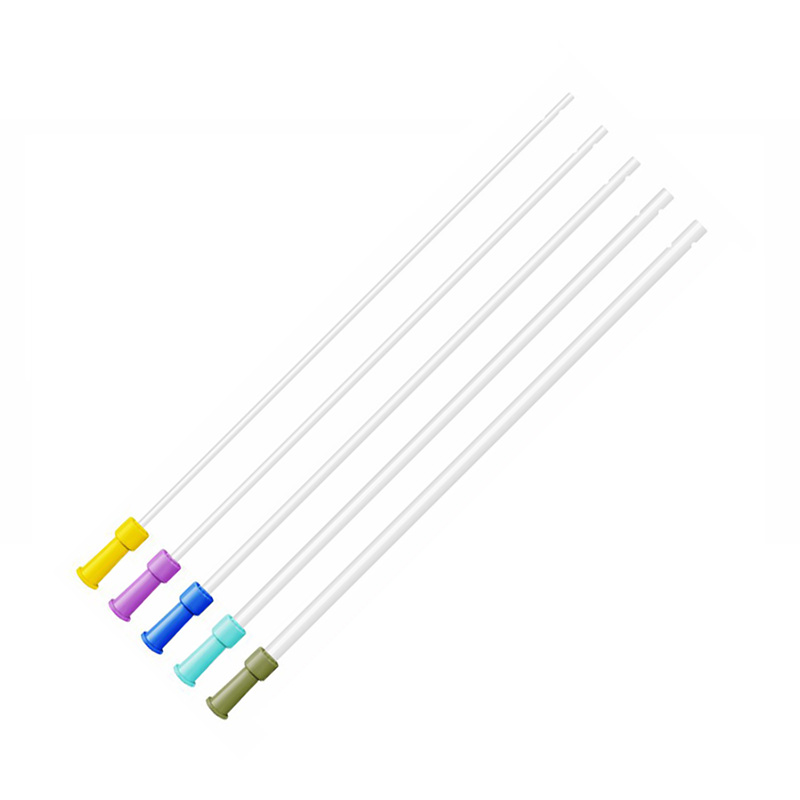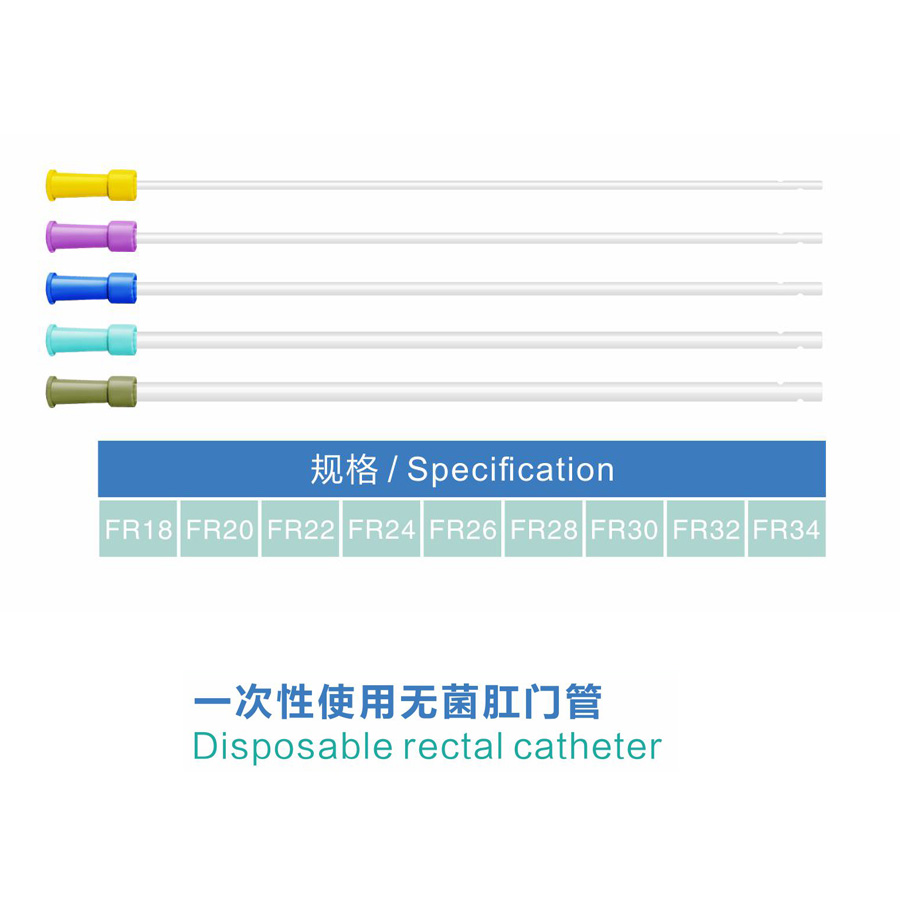The rectal tube is a flexible, hollow tube inserted into the rectum to relieve symptoms associated with gastrointestinal complications, such as gas and fecal impaction. As a type of medical catheter, it plays an important role in both emergency care and routine hospital management. Understanding the rectal tube indication, proper rectal tube size, usage procedure, and how long it can safely remain in place is essential for effective and safe patient care.
What Is a Rectal Tube?
A rectal tube, also known as a flatus tube, is a medical consumable designed to help decompress the bowel by allowing the passage of gas or stool. It is typically made of soft rubber or plastic and features a rounded tip to minimize trauma to rectal mucosa. Some rectal tubes have multiple side holes to enhance drainage efficiency.
Used primarily in hospitals and care facilities, rectal tubes are part of the broader category of medical catheters. Unlike urinary catheters, which are inserted into the bladder, rectal catheters are specifically designed for rectal insertion to assist with bowel decompression or stool diversion.
Rectal Tube Indication: When Is It Used?
There are several clinical conditions in which a rectal tube may be indicated. These include:
- Relief of flatulence or abdominal distension – When patients suffer from excessive gas build-up (often post-surgery), rectal tubes help alleviate discomfort and reduce pressure on the abdominal cavity.
- Fecal incontinence management – In critical care or long-term care patients, especially those bedridden or unconscious, a rectal tube can help manage unregulated bowel movements and prevent skin breakdown.
- Fecal impaction – A rectal tube may assist in relieving hard stool buildup when traditional enemas or manual disimpaction are not effective.
- Before or after surgery – Postoperative bowel atony or ileus can lead to severe gas retention. Rectal tubes may be placed temporarily to relieve symptoms.
- Diagnostic procedures – In some imaging techniques, rectal tubes help introduce contrast media into the bowel for clearer visualization.
These conditions are referred to collectively as rectal tube indications, and proper assessment by medical professionals is necessary before insertion.
Rectal Tube Sizes: Choosing the Right One
Selecting the correct rectal tube size is vital for patient safety and comfort. Rectal tubes come in various sizes, typically measured in French units (Fr). The French size indicates the external diameter of the catheter — the higher the number, the larger the tube.
Here are common rectal tube sizes by age group:
- Infants and neonates: 12–14 Fr
- Children: 14–18 Fr
- Adults: 22–30 Fr
- Elderly or debilitated patients: Smaller sizes may be preferred depending on rectal tone
Choosing the right size ensures that the tube is effective without causing unnecessary trauma or discomfort. Overly large tubes can damage the rectal lining, while tubes that are too small may not allow adequate drainage.
Rectal Tube Insertion Procedure
The insertion of a rectal tube should always be performed by trained healthcare professionals under aseptic conditions. Here is a general overview of the procedure:
- Preparation:
- Explain the procedure to the patient (if conscious) to reduce anxiety.
- Assemble necessary materials: rectal tube, water-based lubricant, gloves, absorbent pads, and a drainage container or collection bag if needed.
- Position the patient on their left side (Sims’ position) to follow the natural curve of the rectum and sigmoid colon.
- Insertion:
- Wear gloves and apply generous lubricant to the tube.
- Gently insert the tube into the rectum (approximately 3–4 inches for adults) while monitoring for resistance.
- If resistance is met, do not force the tube—instead, try repositioning the patient or using a smaller tube.
- Monitoring and Securing:
- Once inserted, observe for the passage of gas, stool, or liquid.
- The tube can be connected to a drainage system or left open to air depending on the intended use.
- Monitor for patient discomfort, bleeding, or signs of bowel perforation.
- Removal and Care:
- Most rectal tubes are not meant to remain in place indefinitely.
- When no longer needed, gently withdraw the tube and dispose of it according to hospital infection control protocols.
How Long Can a Rectal Tube Stay In?
The duration a rectal tube can remain inserted depends on the clinical situation and the patient’s condition. However, rectal tubes are generally not designed for long-term use.
- Temporary relief (gas, impaction): Tubes may be inserted for 30 minutes to 1 hour and then removed.
- Fecal management systems (for incontinence): Some specialized systems can be left in place for up to 29 days, but only under strict medical supervision.
- Routine hospital use: If a tube is left in place for drainage, it should be checked every few hours and replaced every 12–24 hours to reduce the risk of pressure injury or infection.
Extended use may lead to complications such as rectal ulcers, pressure necrosis, or even perforation. Therefore, continuous assessment is crucial, and prolonged use should be avoided unless using a product specifically intended for that duration.
Risks and Precautions
While rectal tubes are generally safe when used appropriately, potential risks include:
- Rectal bleeding or mucosal trauma
- Perforation of the bowel (rare but serious)
- Pressure injury to the anal sphincter
- Infection or irritation
To minimize these risks, it’s essential to use the correct rectal tube size, ensure gentle insertion, and limit the duration of placement. Patients should be monitored closely for discomfort, bleeding, or other adverse effects.
Conclusion
The rectal tube is a valuable medical consumable used to manage various gastrointestinal and bowel-related conditions. Whether relieving gas, managing incontinence, or aiding in diagnostic procedures, understanding the appropriate rectal tube indication, proper rectal tube size, and safe procedural guidelines is essential for optimal patient outcomes.
As a commonly used medical catheter, its application should always be guided by professional medical judgment. With proper usage and monitoring, rectal tubes can greatly improve patient comfort and reduce complications associated with bowel dysfunction.
Post time: May-06-2025









